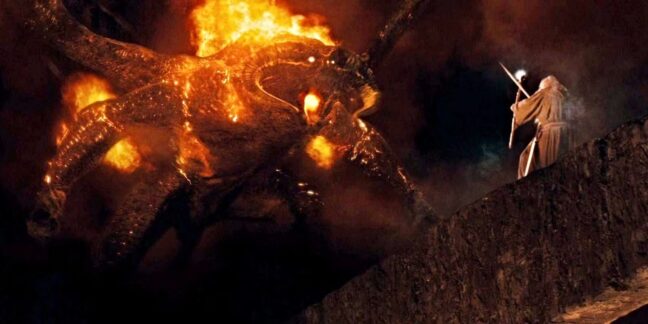After a long wait, the third tier of The Campaign Handbook is out! It’s the biggest instalment yet—70 pages packed with ideas for high-level adventuring, with NPCs, story hooks, loot tables, and fantastic locations. Think infernal invasions, dragon fights, undead princes, and more. Still a draft, but fully playable. Perfect for busy DMs who want to be ready for anything!
Get the packet (and all previous packets!) on my Patreon (link).
For a sample, this excerpt explores how to run a moment of total defeat: those turning points where the villain wins, and the heroes are brought low. It offers practical guidance for creating despair without railroading, helping you set up the lowest of downward beats for your players so their eventual triumph feel earned.

End of Tier 3
Gandalf falls to the Balrog. Thanos collects the six stones. Luke loses a hand. Sometimes, the story reaches a point where all seems lost: the hero hits rock bottom, and hope vanishes.
Stories need moments like this. These devastating setbacks raise the stakes to their peak, forcing the heroes to reckon with their failures and face their greatest challenge yet. When they finally triumph, it feels earned.
There are two challenges when applying this structure to 5e. First, roleplaying games aren’t scripted: players decide the story’s direction. Second, 5e’s steep power curve makes it harder to pose such a serious threat by the end of Tier 3. We need to work within these constraints, though, not against them.
So: what does catastrophe look like?
The key idea is loss. That might mean the party is defeated or the villain achieves a major objective. But don’t overlook other kinds of loss. A key ally dies, or worse, defects. An ancient artifact is stolen, broken, or corrupted. The party sacrifices one thing to save another, only to realise at the last moment that they made the wrong choice. The scale should be massive, the timing critical, the impact devastating. The villain doesn’t just win: they win decisively. The party have been completely outplayed, and the world is one step closer to apocalypse.
Is it possible to make this happen without railroading? Yes. We do the same thing we always do. We set up situations. Here’s how:
- Build steadily. Increase pressure over time. Drop clues that the party is losing control—without giving away the villain’s full plan.
- Embrace the villain’s agency. Think like them. If they were a player, what would they do next?
- Exploit every asset. Use whatever resources, allies, or tricks the villain plausibly has. Make it feel like a rigged chess game—one the party walked into thinking they could win.
- Make it personal. Tie the loss to the characters’ decisions. Punish their blind spots. Call back to earlier choices. If they’re too cautious, time runs out. If they’re reckless, innocents die. If they’re arrogant, they walk straight into the trap.
- Give choices—but cruel ones. True despair comes from dilemmas, not inevitability. Do they save the city, or their friend? Do they let the villain escape, or let someone die? Every option hurts. And that’s the point. The story feels hopeless—because it is. For now.
None of this requires railroading. You don’t force the outcome: you lay the groundwork, then see what they do. Hold on loosely.
If you like what I do, please support me on Patreon or buy my products on DriveThru RPG. You can follow me on Bluesky @scrollforinit and Instagram @scrollforinitiative. And if you want to make my day, you can buy me a coffee here.

